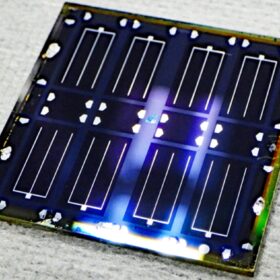Japan’s 22nd solar auction concludes with lowest bid of $0.049/kWh
Japan has allocated 56.4 MW of PV capacity in its latest procurement exercise. The lowest bid came in at JPY 7.5 ($0.049)/kWh, while the average final price was JPY 8.17/kWh.
Scientists create PV-driven synaptic device for AI processing
A team from Tokyo University of Science has developed a solar cell-based computing device that mimics human synaptic behaviour to use in edge AI processing. The researchers say the device has the potential to accelerate the development of energy-efficient edge AI sensors in applications including health monitoring, surveillance and automotive technologies.
Progress on standardized tests, protocols for vehicle-integrated photovoltaics
Researchers from University of Miyazaki in Japan have published a technical background paper about testing protocols to address the unique challenges of vehicle integrated photovoltaic (VIPV) modules. It features the background on a new numerical probability model that incorporates shading, partial-shading, dynamic shading, uneven terrain and modules’ curvatures.
Panasonic releases new R32 heat pumps
Panasonic has launched its new R32 heat pumps, introducing the EXTERIOS Z and ClimaPure XZ series. The models offer heating capacities ranging from 10,900 Btu/h to 28,800 Btu/h, depending on specifications.
Learning from leading rooftop solar markets
A report from the Council of Energy, Environment and Water has analyzed nine of the ten countries with the largest rooftop solar markets to offer recommendations to other economies looking to accelerate rooftop solar deployment.
Indium-free chalcopyrite solar cell achieves 12.25% efficiency
Japanese scientists have developed a wide-bandgap chalcopyrite solar cell that can reportedly achieve high open-circuit voltage and fill factor values. The device is intended for use in top cell applications in tandem devices.
Japanese gas supplier buys stake in Vietnamese PV operator
Japanese energy producer Shizuoka Gas has jumped into Vietnam’s renewable energy sector with the acquisition of a 25% stake in My Son-Hoan Loc Viet Solar Energy JSC.
New research optimizes energy density in sodium-ion batteries
A machine learning model has identified Na[Mn0.36Ni0.44Ti0.15Fe0.05]O2 as the optimum composition to attain the highest energy density for sodium-ion (Na-ion) devices.
Hydrogen detection system for safety, quality control
Researchers in Japan have developed an optimized hydrogen gas measurement using TDLAS technique. It is reportedly able to achieve a detection range of hydrogen gas concentration of 0.01% to 100%. The group said that it can improve hydrogen safety and in turn, its adoption.
What happens when malware hits PV systems
A random malware variant affected about 800 remote monitoring devices at ground-mounted PV plants in Japan in May 2024. Tokyo-based cybersecurity firm Girasol Energy has told pv magazine what happened and how PV asset owners can protect themselves against such incidents.










